Welcome back, everyone. If you’ve already read my blogs on the Single Pikake style and the Double Pikake style, then you’re ready for the next beautiful step in this traditional Niʻihau shell jewelry journey (ニイハウ シェル ジュエリー).
The Double-Double Pikake is one of the most eye-catching styles ever created with genuine Momi shells (モミシェル). It has more volume than the Double Pikake, more movement than the Single Pikake, and a full, rounded shape that looks so soft and elegant when finished.
I still remember the first time I heard the name “Double-Double Pikake.” I thought, Wait… is that really a real style? Or is someone just being funny?
But no — it’s very real, very traditional, and absolutely beautiful when done correctly.
Whether you’re a collector of authentic Niʻihau shell jewelry, someone who loves handmade Hawaiian gifts, or a beginner learning how these styles are actually made, this is the technique that makes you pause and say, “Wow… so that’s how they do it.”
Now that you already understand how Pikake clusters begin (from the Single style) and how they expand (from the Double style), this blog will help you see how those foundations come together to create one of the fullest versions of the Pikake family.
Let’s explore how the Double-Double Pikake is formed — step by step, shell by shell — and why this style holds such a special place in Niʻihau’s traditional artistry.
How the Double-Double Pikake Style Is Made
The Double-Double Pikake, also known as the Coconut Style, begins much like the other Pikake forms — but what makes it stand apart is how the shells are layered and joined to form two softly rounded rows that seem to move together like a gentle ocean current.
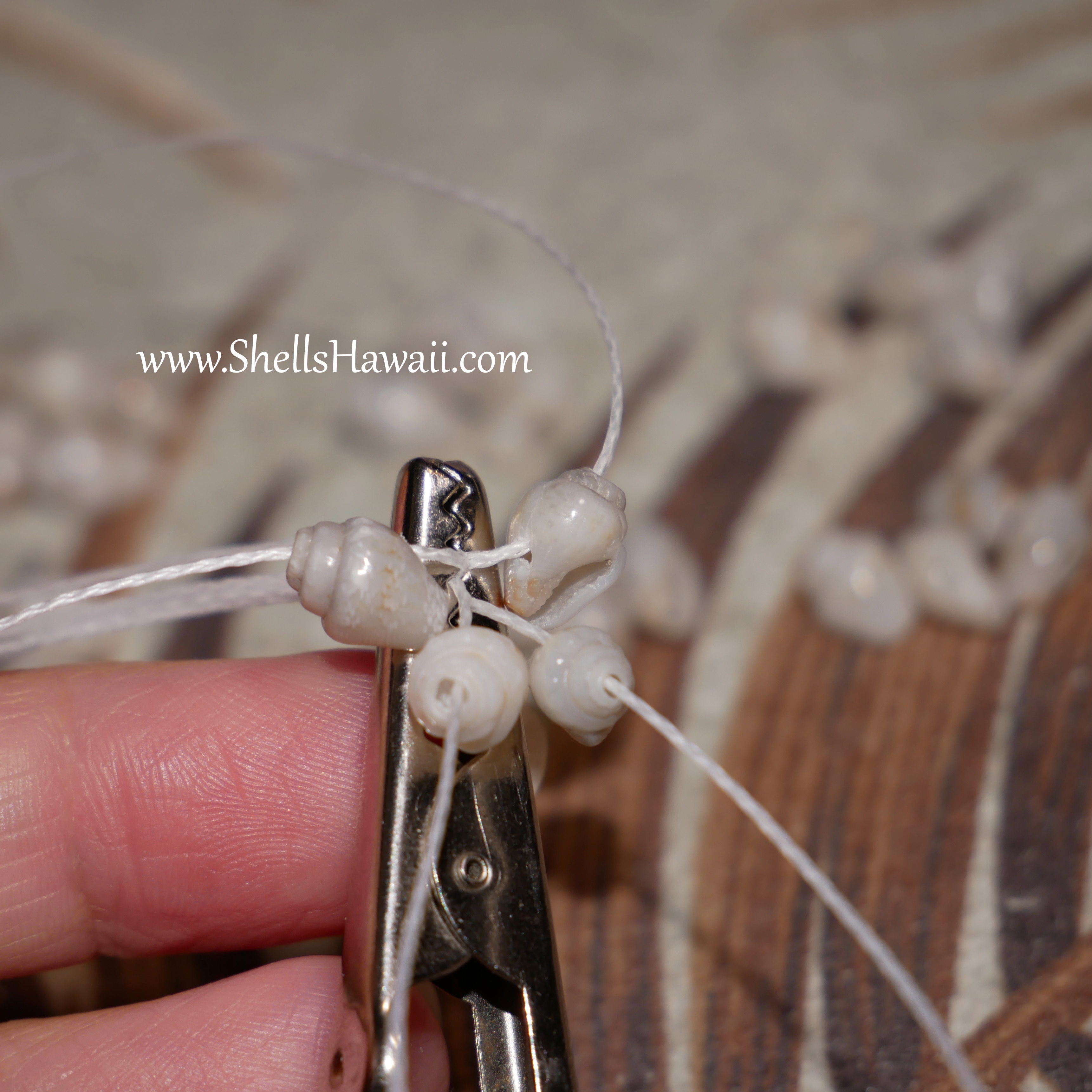
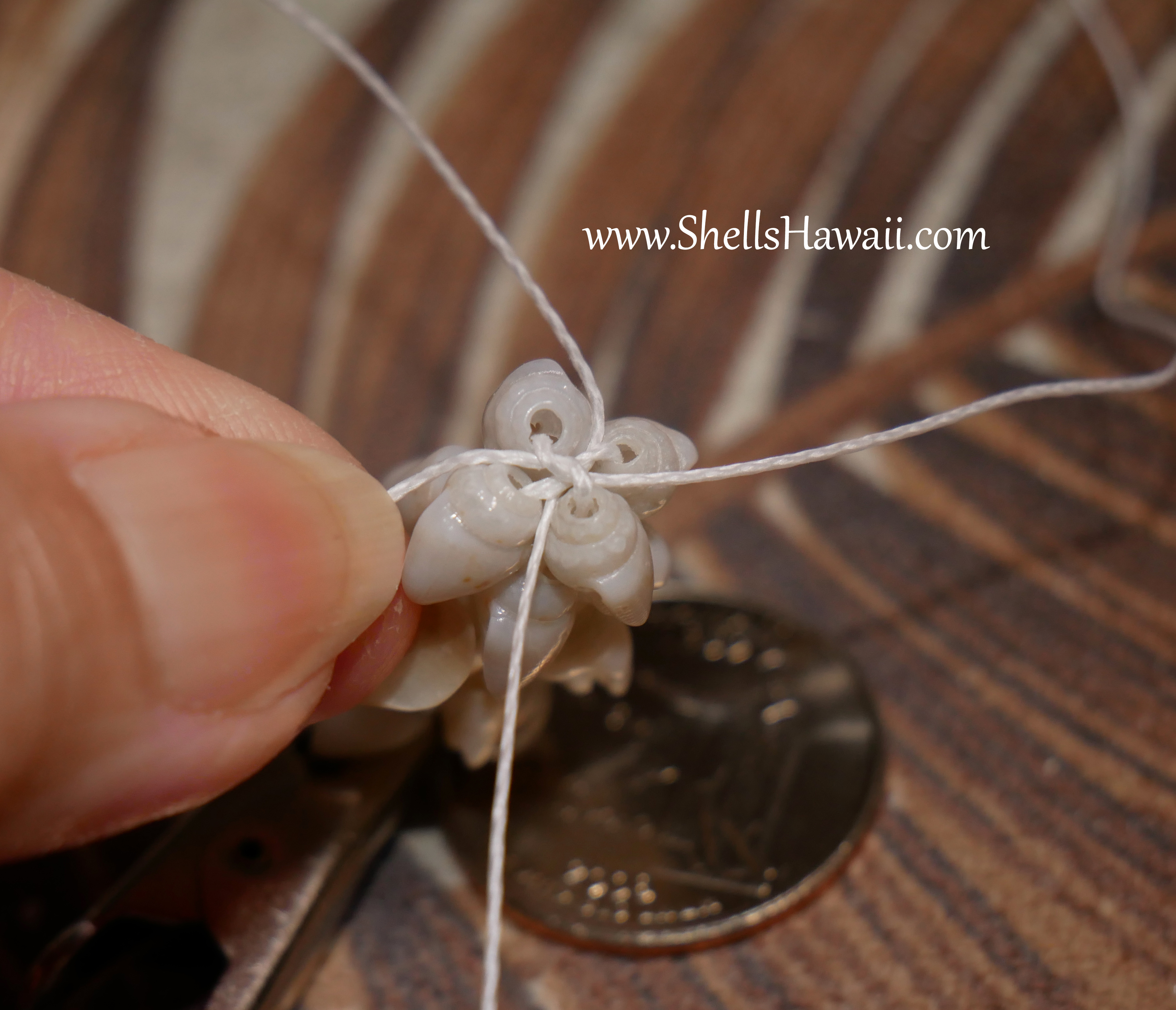
It’s created using four working strands, which allow the shells to be added side by side, giving the lei its beautifully full and rounded body. Each shell is placed with patience and care — aligned just right so that every curve flows evenly and naturally. The strands must stay balanced, the tension light, and the rhythm steady, or the lei can quickly lose its graceful form.
This style is often called “Coconut Style” because, when finished, the lei resembles the long, soft yellow blossoms of the male coconut flower. The shape and gentle flow of the rows mirror the natural droop and movement of those blossoms — full, rounded, and alive with motion.
Rather than forming a single rounded line like the Single Pikake, this design expands outward — creating a double fullness that feels soft, dimensional, and almost floral, like the delicate blossoms of a coconut tree swaying in the island breeze.
If you’d like to explore this technique in a smaller project, I recommend trying it through my Niʻihau Shell Kit, which includes everything you need to make your own Coconut Style earrings. It’s a lovely way to experience the rhythm and patience behind traditional Niʻihau shell jewelry (ニイハウ シェル ジュエリー) — and to see how this weaving style translates beautifully into a finished jewelry piece like earrings or a delicate bracelet.
For beginners who are new to shell stringing or curious about how these styles connect, my Beginner’s Guide offers an easy introduction before you dive into more advanced designs like this.
Understanding the Difference Between Single, double and Double-Double Pikake
The Single Pīkake style ⤵️ has that soft, gentle braid-like look — two flowing rows of Momi shells (モミシェル) sitting side by side, curving in a natural, jasmine-petal rhythm. It’s smooth, elegant, and slightly twisted in a way that feels light and graceful, like a continuous line of tiny petals layered in motion.

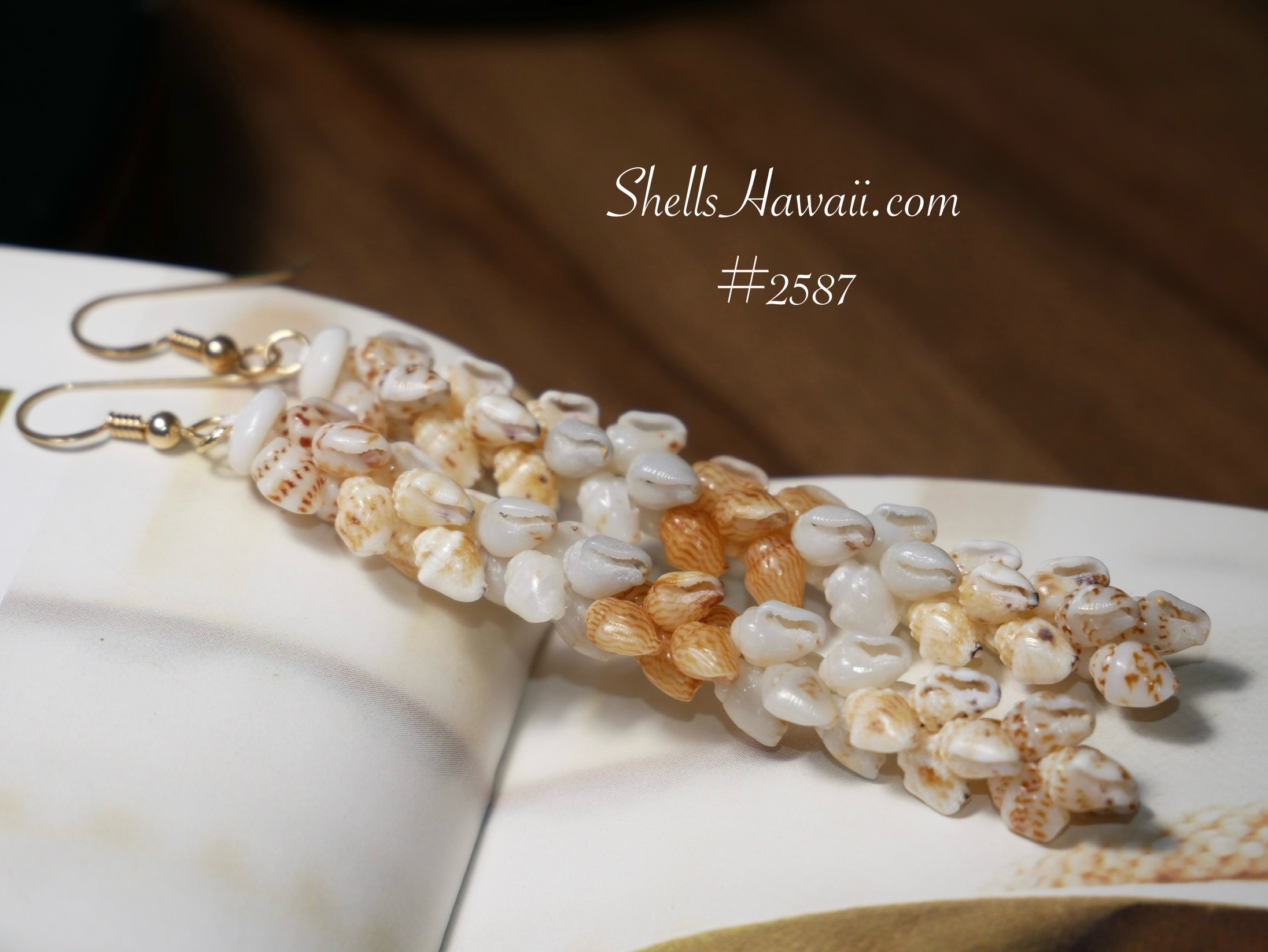
If you’re new to Momi shells, you can read➡️ this blog to learn more before exploring the Pikake styles, since most Pikake designs are traditionally created with Momi shells.
The Double Pikake is just a fuller version of the Single Pikake. Both use the exact same poking angle and the same Pikake technique — the only difference is the number of strands you sew with. Single Pikake uses one folded strand (two working ends), while Double Pikake starts with two strands folded together (four working ends). That extra set of threads creates a 4-shell cluster instead of a 2-shell one, giving the Double Pikake a rounder, slightly fuller look compared to the softer, lighter flow of the Single.
Before we move into the Double-Double Pikake, if you haven’t had a chance to read what the Double Pikake style is, you can➡️ click here to read a full blog.
The Double-Double Pikake starts in a similar way, but instead of using two strands, you begin with four long strands. You then find the center point and start from the middle. From there, each side will have four working strands that allow the shells to be sewn side by side. This is what creates the thicker, fuller, and more rounded appearance — like two Pikake rows flowing together in perfect balance.
Double-Double Pikake — How It Turns Out If You Poke the Holes in Different Angles
In Niʻihau shell jewelry (ニイハウ シェル ジュエリー), the angle of how each shell is poked — whether Kahelelani, Momi, or Laiki — plays a big role in how the final piece turns out. The direction of the hole, along with the technique you use, changes everything about how the shells align and flow together.
In this case, we’re getting to know the Single Pikake, Double Pikake and Double-Double Pikake styles that use Momi shells (モミシェル) to create their distinctive shapes. Below, you’ll see a few side-by-side photos showing three different poking angles, all using the same technique — one for the Single Pikake and one for the Double-Double Pikake — so you can see how the direction of the hole completely transforms the look of each piece.
⤵️ Here’s a side-by-side look at Single Pikake and Double Pikake. Both are poked at the exact same angle and use the same Pikake technique — the only difference is the number of strands used, which changes how full the final piece looks.
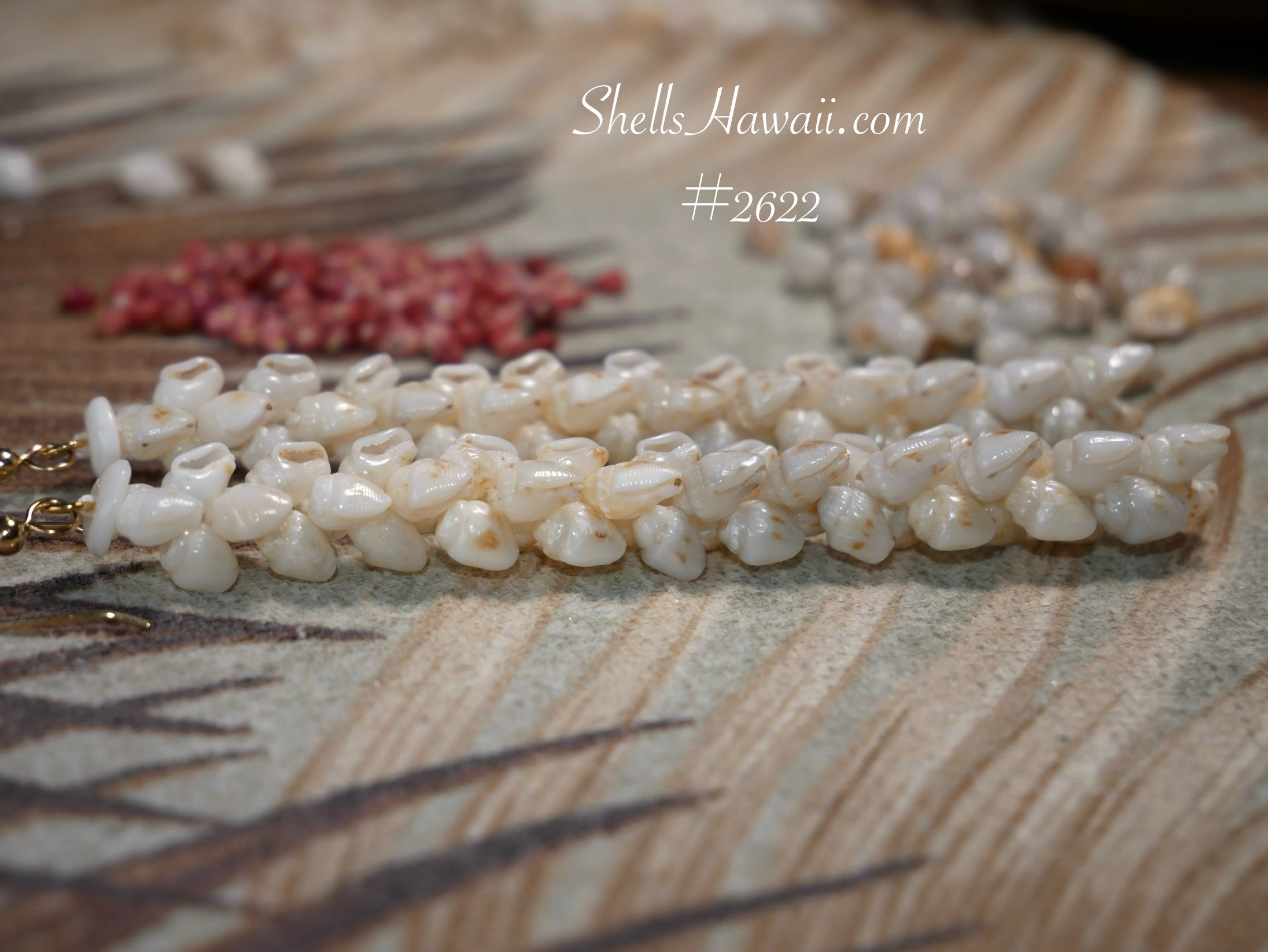
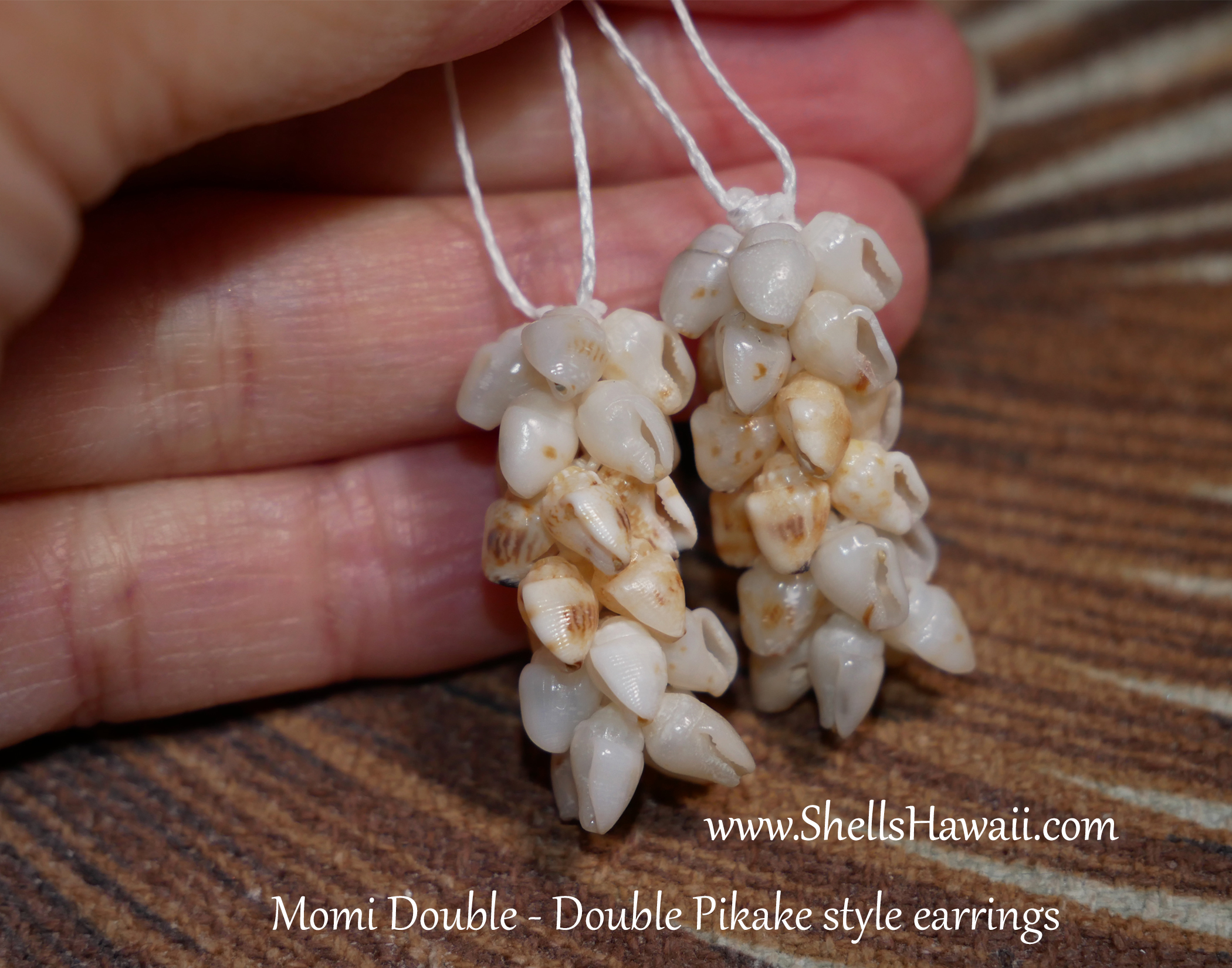
When you string ⬇️ the Double-Double Pikake, the result is a lei that looks beautifully full, rounded, and softly layered — almost like two Pikake rows woven side by side. Each shell sits neatly next to the other, creating a continuous, flowing texture that’s thick but flexible.
If you’d like to take a look behind the scenes and see how I made Lei #2005, you can ➡️ click here.
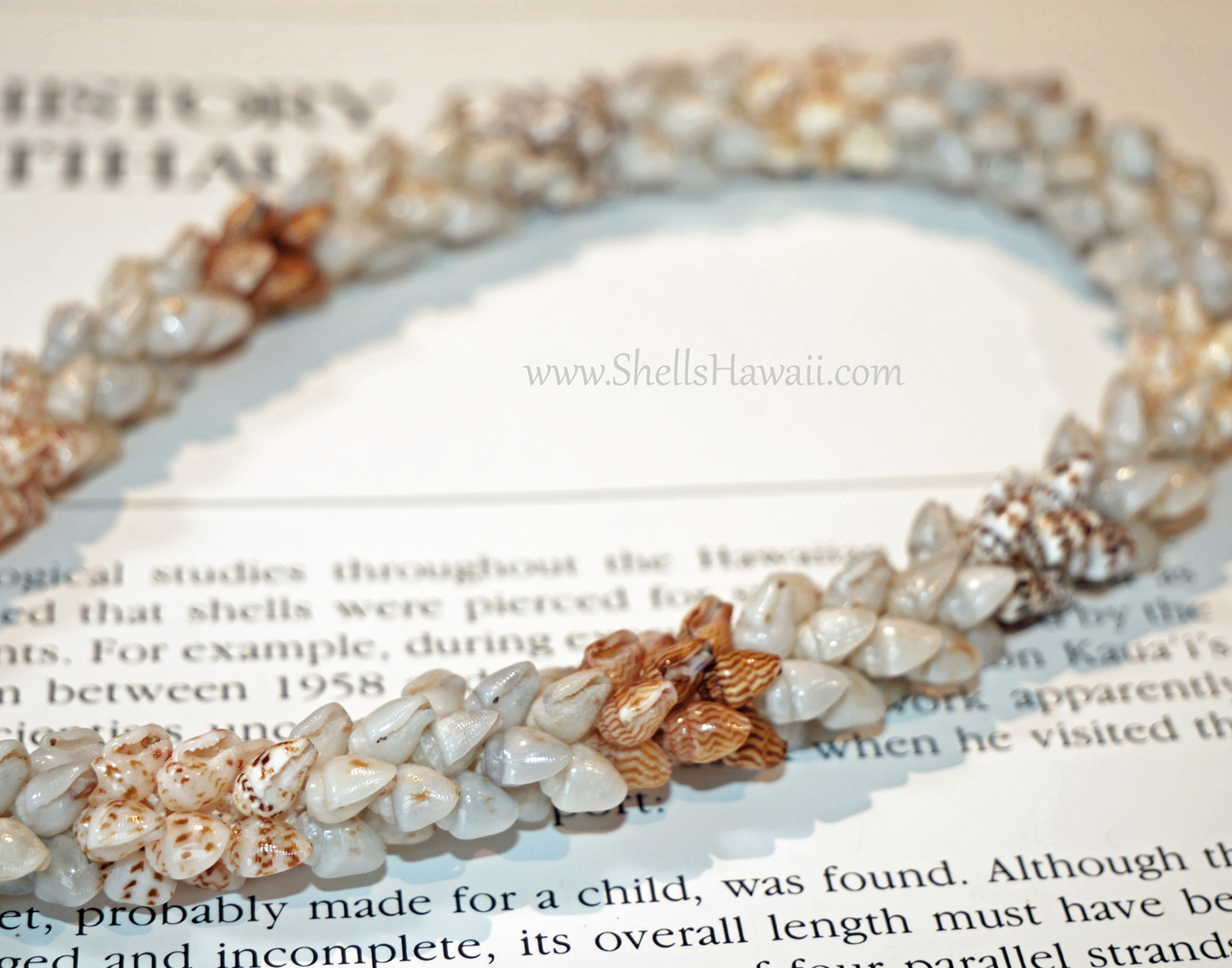
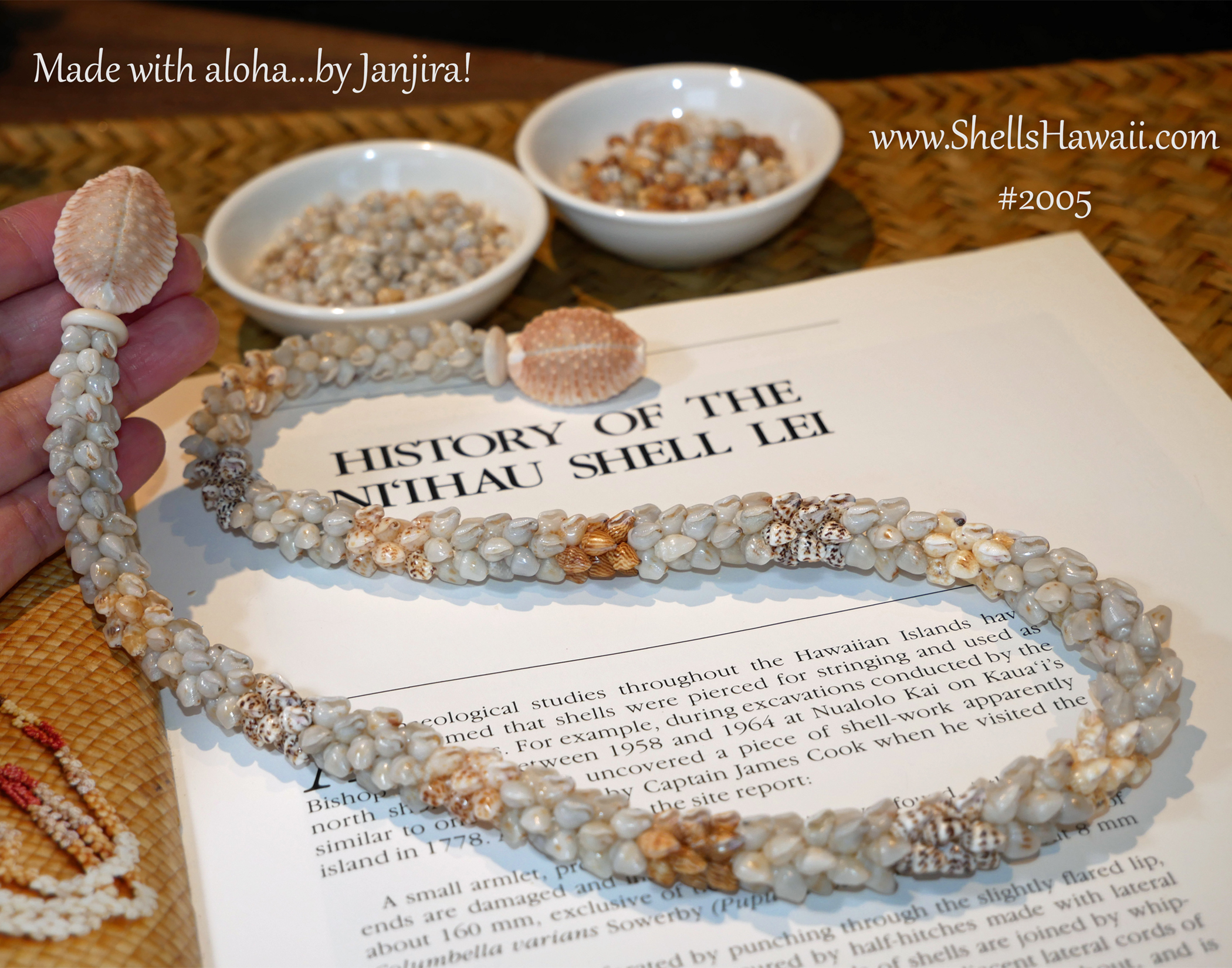
If you look closely, you’ll notice how the shells overlap slightly, forming gentle curves that move together like soft waves. That’s the signature of the Coconut Style — the way each strand joins together to form one full, elegant body.
⤵️ Side by side: Single Pikake vs. Double-Double Pikake — both poked at the same angle, using the same Pikake technique.

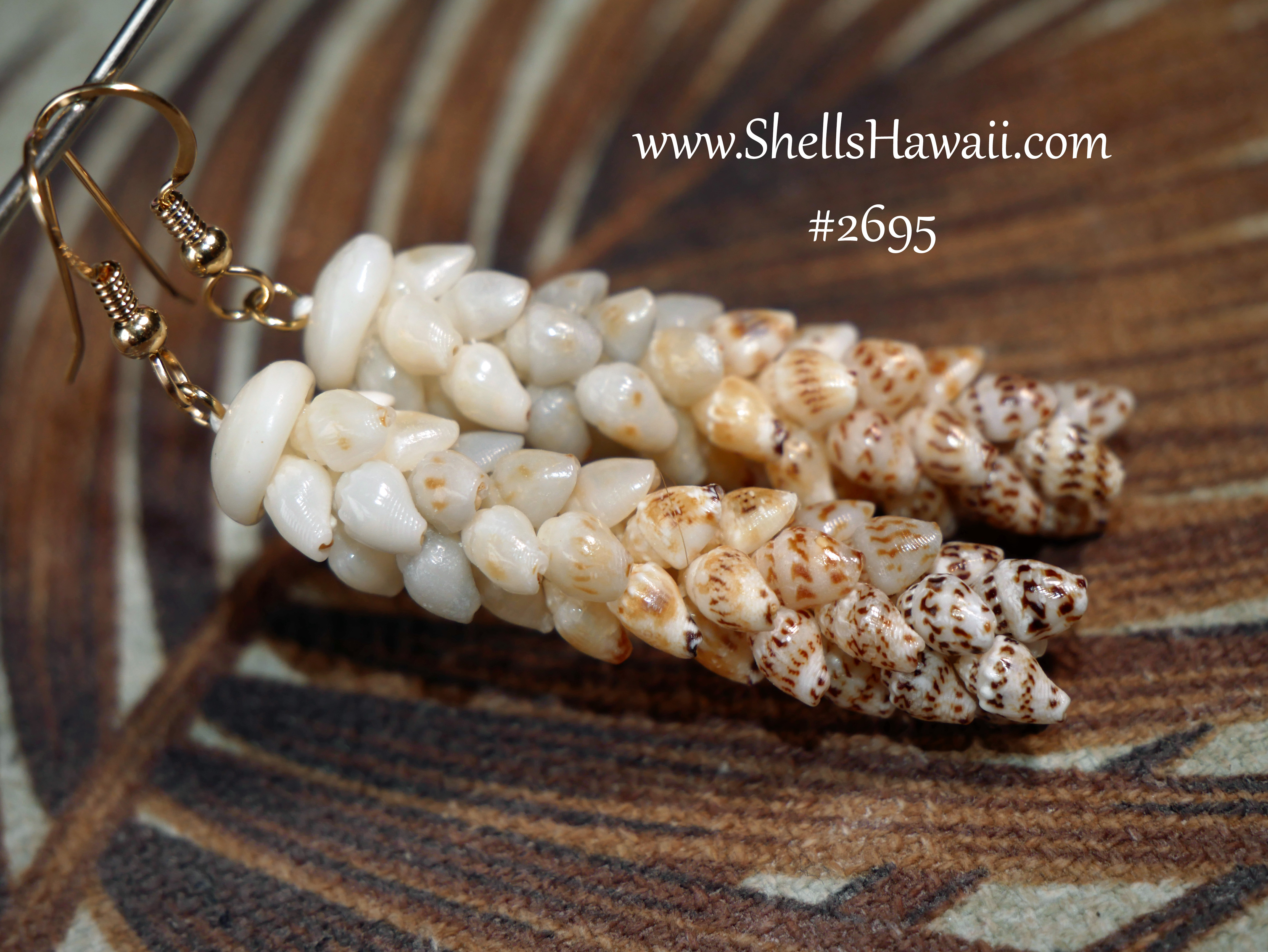
When the holes are poked at a slightly different angle, the shells begin to face outward, changing how the lei opens and curves. This subtle shift gives the piece its own character — sometimes a little looser, sometimes more compact — depending on the natural curve of the shells and the direction of the poke.
⤵️ Side by side: Single Pikake vs. Double-Double Pikake — both poked at the same angle, using the same Pikake technique.
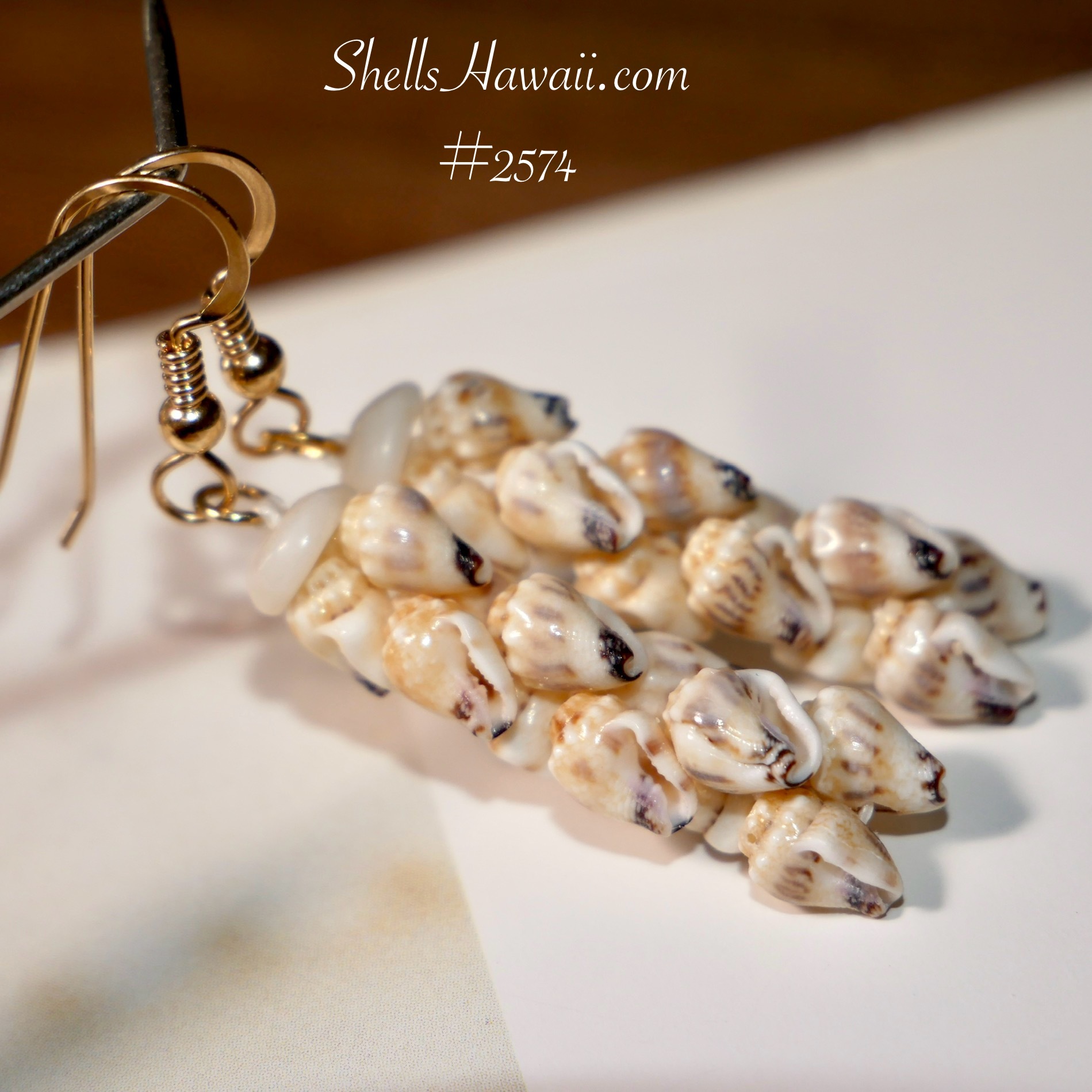
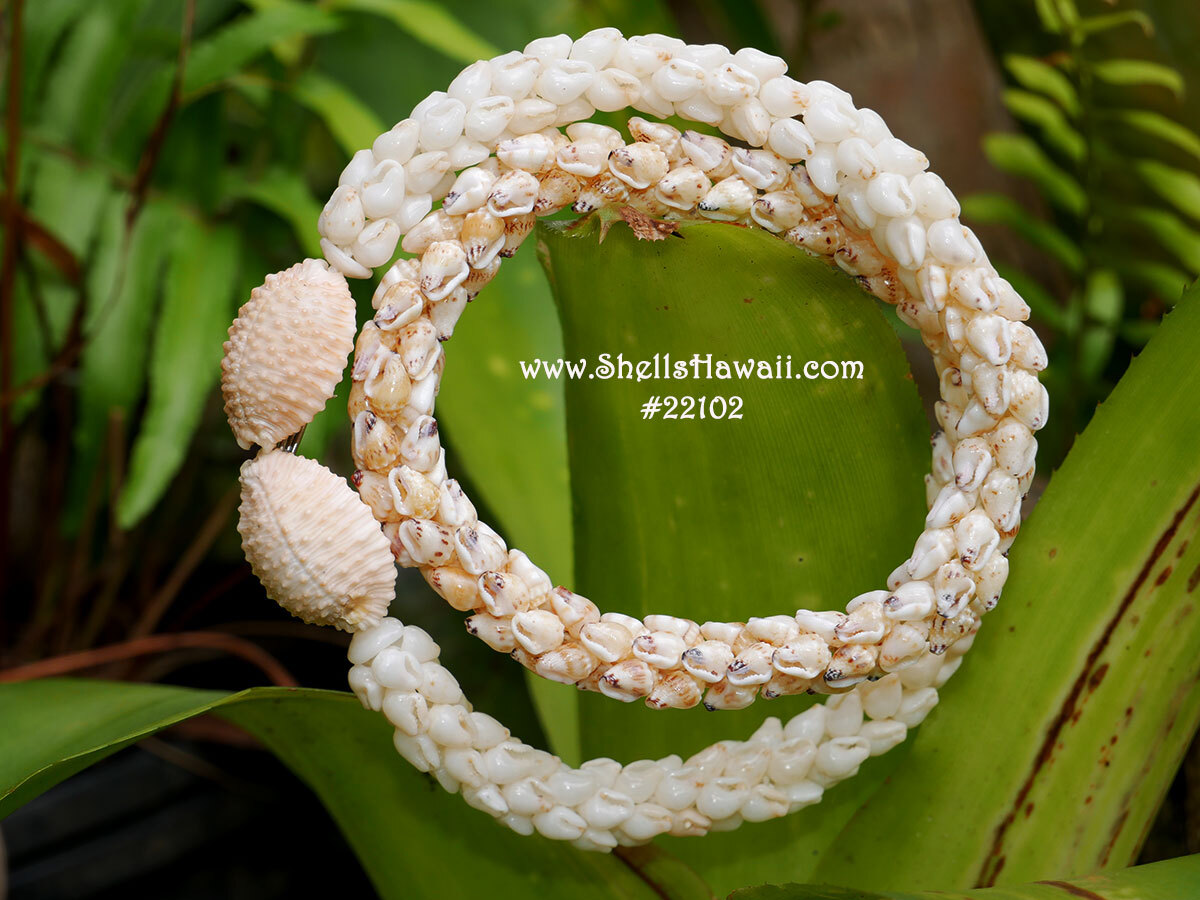
Closing Thoughts
I hope that now, when you hear Single Pikake, Double Pikake or Double-Double Pikake, you can picture how they look — and have a clearer sense of how each one is made. These three styles have their own rhythm and personality, yet they share the same gentle spirit that makes Niʻihau shell jewelry (ニイハウ シェル ジュエリー) so special.
Yes, Niʻihau shell jewelry has so many styles and techniques — even the angle of how each shell is poked can change the entire look of a piece. We all want to learn and use the right traditional names, styles, and language, but I know that for many people who admire this beautiful art, those Hawaiian terms can sometimes be confusing or hard to remember.
That’s why I try my best to explain everything in the simplest way possible — so when you hear these terms again, you’ll be able to picture them clearly in your mind and feel more confident talking about the jewelry you love or plan to purchase.
Everything I share here comes from both my research and my own experience making these pieces, hoping to pass along a little of what I’ve learned over the years.
I hope you enjoyed learning a little more about this unique style. And if you’re curious about other traditional designs, I’ll be sharing next about the Kipona Style — another favorite that blends color, texture, and movement in such a beautiful way.
A Little Something Before You Go
If you’re looking for a meaningful gift for someone you love, you might enjoy reading my Niʻihau Shell Jewelry Buyer’s Guide. It’s filled with ideas and tips to help you choose something truly special — whether it’s for a birthday, anniversary, or simply a gift of aloha.
And if you’re new to this art and would like to give it a try yourself, you may want to learn a few things before deciding which loose shells to buy. My Beginner’s Guide walks you through the basics of sorting, poking, and stringing — perfect for anyone curious about creating their first piece of authentic Niʻihau shell jewelry (ニイハウ シェル ジュエリー).
If you have any questions or need any advice, please feel free to contact me here. I’ll be more than happy to help.
With aloha,
Janjira
 USD
USD

